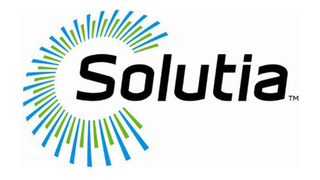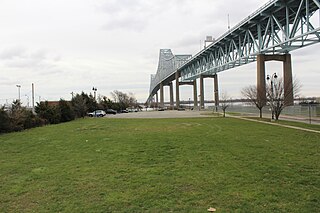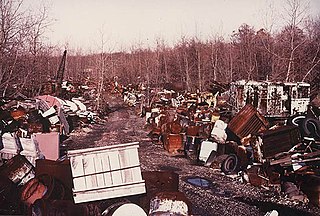Related Research Articles

Polychlorinated biphenyls (PCBs) are highly carcinogenic chemical compounds, formerly used in industrial and consumer products, whose production was banned in the United States by the Toxic Substances Control Act in 1976 and internationally by the Stockholm Convention on Persistent Organic Pollutants in 2001.

Rhondda Cynon Taf is a county borough in the south-east of Wales. It consists of five valleys: the Rhondda Fawr, Rhondda Fach, Cynon, Taff and Ely valleys, plus several towns and villages away from the valleys.

Environmental remediation is the cleanup of hazardous substances dealing with the removal, treatment and containment of pollution or contaminants from environmental media such as soil, groundwater, sediment. Remediation may be required by regulations before development of land revitalization projects. Developers who agree to voluntary cleanup may be offered incentives under state or municipal programs like New York State's Brownfield Cleanup Program. If remediation is done by removal the waste materials are simply transported off-site for disposal at another location. The waste material can also be contained by physical barriers like slurry walls. The use of slurry walls is well-established in the construction industry. The application of (low) pressure grouting, used to mitigate soil liquefaction risks in San Francisco and other earthquake zones, has achieved mixed results in field tests to create barriers, and site-specific results depend upon many variable conditions that can greatly impact outcomes.

Solutia Inc. was an American manufacturer of materials and specialty chemicals including polyvinyl butyral (PVB), ethylene vinyl acetate (EVA), and thermoplastic polyurethane (TPU) interlayers for laminated glass, aftermarket window films, protective barrier and conductive films, and rubber processing chemicals. The company was formed on September 1, 1997, as a divestiture of the Monsanto Company chemical business. In July 2012, the company was acquired by Eastman Chemical Company.
Guiyu is a town created from an agglomerate of four adjoined villages totalling 150,000 people in the Chaoyang district of Guangdong province in China. Situated on the South China Sea coast, Guiyu is perhaps best known in the global environmentalist community for its reception of e-waste. In fact, the town also holds the record for being the largest e-waste site of the world, as of 2013.
In 1990, the Allied Paper, Inc./Portage Creek/Kalamazoo River in southwestern Michigan was declared by the Environmental Protection Agency (EPA) to be a Superfund site – in other words, an abandoned industrial site containing significant amounts of toxic waste. The EPA and companies responsible for the waste in this area, which includes a three-mile section of Portage Creek as well as part of the Kalamazoo River, into which it flows, are currently involved in an effort to reduce the amount of toxic waste at the site, which is contaminated by PCBs from paper mills and other factories.
Groes-faen is a village approximately three miles south of Llantrisant in the county borough of Rhondda Cynon Taf, Wales. It is in the historic county of Glamorgan.
The Lipari Landill is an inactive landfill on a 6-acre (2.4 ha) former gravel pit in Mantua Township, New Jersey. It was used from 1958 to 1971 as a dump site for household and industrial wastes. Toxic organic compounds and heavy metals dumped at the site have percolated into the ground water and leached into lakes and streams in the surrounding area. The site has been identified as the worst toxic dump in the United States and was ranked at the top of the United States Environmental Protection Agency's Superfund eligibility list.

Wade Dump was a rubber recycling facility and illegal industrial waste storage and disposal facility in Chester, Pennsylvania. It was located at 1 Flower Street on the western bank of the Delaware River just north of the Commodore Barry Bridge.

The Krejci Dump was a privately owned dump occupying 47 acres (19 ha) on several sites along Hines Hill Road near Boston Heights, Summit County, Ohio. After the area was converted into part of the then-Cuyahoga Valley National Recreation Area, the National Park Service discovered that the property, part of one of the most-heavily used parks in the country, was also one of the most contaminated sites in the United States Environmental Protection Agency's Region V. The dump subsequently became a Superfund cleanup site.
Maendy Quarry is an abandoned stone quarry near Cardiff in South Wales that was subsequently used in the 1960s as a landfill site for industrial waste.

Between 1947 and 1977, General Electric polluted the Hudson River by discharging polychlorinated biphenyls (PCBs) causing a range of harmful effects to wildlife and people who eat fish from the river. Other kinds of pollution, including mercury contamination and cities discharging untreated sewage, have also caused problems in the river.
Monsanto was involved in several high-profile lawsuits, as both plaintiff and defendant. It had been defendant in a number of lawsuits over health and environmental issues related to its products. Monsanto also made frequent use of the courts to defend its patents, particularly in the area of agricultural biotechnology. Bayer acquired Monsanto in 2018, and the company has since been involved in litigation related to ex-Monsanto products such as glyphosate, PCBs and dicamba. In 2020 it paid over $10 billion to settle lawsuits involving the glyphosate based herbicide Roundup.
The Clyde cancer cluster was a childhood cancer cluster located in and around Clyde, Ohio, United States. The cluster was classified by the Ohio Department of Health in 2009. In an 11-year interval, ten childhood cancers were documented in an area where 5.3 were expected, and four pediatric brain and central nervous system cancers were reported, in an area where 0.92 were expected. According to the ODH, the odds of this happening without a common cause are less than 1 in 20. No known commonality exists between the cases, and despite years of investigation no cause has been found.
Polychorinated biphenyls, or PCBs, are a type of chemical that was widely used in the 1960s and 1970s, and which are a contamination source of soil and water. They are fairly stable and therefore persistent in the environment. Bioremediation of PCBs is the use of microorganisms to degrade PCBs from contaminated sites, relying on multiple microorganisms' co-metabolism. Anaerobic microorganisms dechlorinate PCBs first, and other microorganisms that are capable of doing BH pathway can break down the dechlorinated PCBs to usable intermediates like acyl-CoA or carbon dioxide. If no BH pathway-capable microorganisms are present, dechlorinated PCBs can be mineralized with help of fungi and plants. However, there are multiple limiting factors for this co-metabolism.
Emmell's Septic Landfill (ESL) is a landfill in Galloway Township, New Jersey and takes up about 38 acres of space. The landfill was in operation from 1967 until 1979. ESL disposed of liquid and solid waste including many chemicals such as volatile organic compounds (VOCs), Polychlorinated Biphenyls (PCBs), Trichloroethene and Vinyl chloride which all had their own effect on the environment and community. These chemicals affected the groundwater required millions of dollars to reconstruct the groundwater pathways and provide clean water to residents. The landfill holds a Hazardous Ranking Score of a 50/100, qualifying for the Superfund National Priority List. In August 1999, the state acknowledged the site's contamination and held town meetings and provided research upon the site such as groundwater samples. In July 1997, a sitewide investigation was called upon by the United States Environmental Protection Agency. In total the clean up was estimated to cost $5 million to fund this superfund site, and a grant of $3.9 million was given by the Federal Government under the Recovery Act Funding (Previti). Today, the project is still ongoing however, greatly improved since the landfill was discovered.
The Diamond Head Oil Refinery is a former oil reprocessing facility located in Kearny, New Jersey, United States, that was designated as a Superfund site by the Environmental Protection Agency (EPA). It opened up in 1946, but then stopped production in 1979 and has been inactive since then. The refinery was shut down in 1980 and the EPA designated it as a Superfund site in 1991 due to the discovery of toxic chemicals in the soil and the surface water. This created a dangerous work environment for the workers at the facility. The EPA proposed a clean up plan for the site, but it has yet to take effect. So far, the Diamond Head site is still in the process of being cleaned up. Although cleanup plans were discussed and finalized, the future of the Diamond Head Oil Refinery and its cleanup state is unknown.
Llwyneinion is a village in Wrexham County Borough, Wales. It is part of the community of Esclusham. Its name can be translated from the Welsh language as "Einion's Grove", although until at least the 19th century the name was more commonly written as Llwynenion, "Enion's Grove".
Forest Waste Products is a 120-acre (49-hectare) Superfund site in Forest Township northwest of Otisville, Michigan.
References
- ↑ "The wasteland: how years of secret chemical dumping left a toxic legacy". The Guardian. 12 February 2007. Retrieved 1 September 2014.
- ↑ Contaminated sites Bratislava 2013
- ↑ "Burying The Truth, the orginal [sic] Ecologist investigation into Monsanto and Brofiscin Quarry". theecologist.org. Retrieved 26 March 2023.
- ↑ "Brofiscin Quarry, Groes Faen". Countryside Council for Wales . Archived from the original on 6 June 2014. Retrieved 9 May 2012.
- 1 2 3 Staff, Wales Online. 17 Oct, 2011 Remedial work to start on quarry
- ↑ Burges Salmon LLP. 12 April 2012 Changes to the contaminated land regime Archived 2014-09-03 at the Wayback Machine
- 1 2 BBC 15 June 2011 Brofiscin Quarry pollution at Groesfaen to be cleaned
- ↑ "The wasteland: how years of secret chemical dumping left a toxic legacy". The Guardian. 12 February 2007. Retrieved 1 September 2014.
- ↑ "Monsanto agrees to clean up toxic chemicals in South Wales quarry". The Guardian. 21 February 2011. Retrieved 5 June 2013.
- ↑ "EA responsibility". Environment Agency Wales. Archived from the original on 14 October 2013. Retrieved 5 June 2013.
- ↑ Rhondda Cynon Taf County Borough Council RCTCBC "Brofiscin" site Archived September 2, 2014, at the Wayback Machine Accessed 1 September 2014
- ↑ BBC, 12 February 2007, 22:48 £100m site clean up cost denied
- ↑ BBC 17 October 2011 Brofiscin Quarry waste clean-up starts near Llantrisant
- ↑ "What happens next?". Environment Agency Wales. Archived from the original on 19 June 2013. Retrieved 5 June 2013.
- ↑ Stanley PC. Brofiscin Quarry Remediation Scheme. Cardiff, Wales. [ permanent dead link ] International Conference, Contaminated Sites. Bratislava 2013 pp 111-122
- ↑ Levitt, Tom. "Monsanto, BP and Veolia agree to pay for cleanup of contaminated Welsh site". The Guardian. Retrieved 1 September 2017.